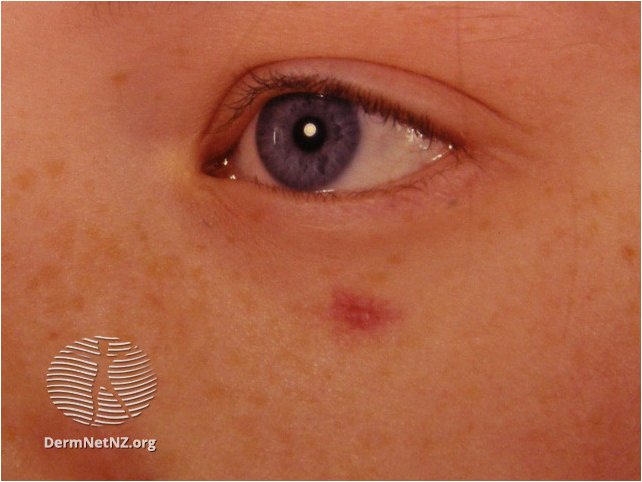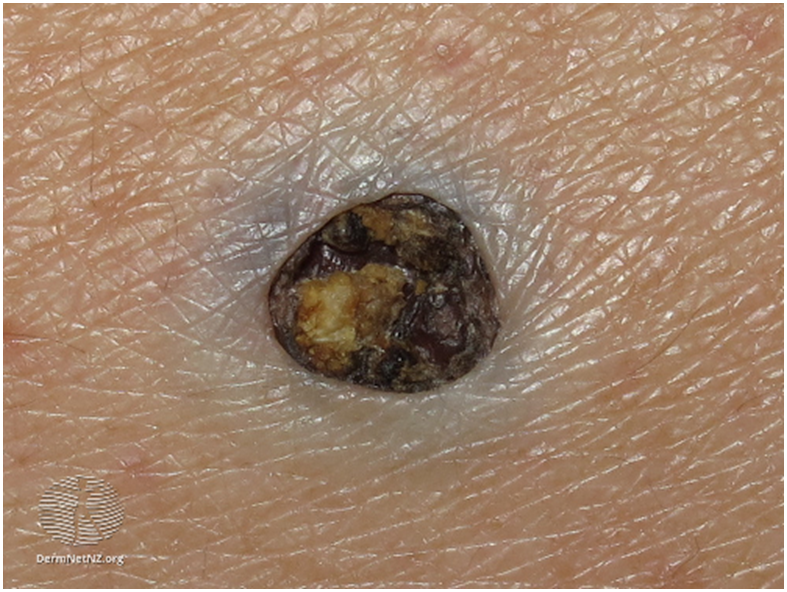
Lipoma
- Asymptomatic. Slow growing
- Dome or egg-shaped, soft, mobile sub-cutaneous nodule
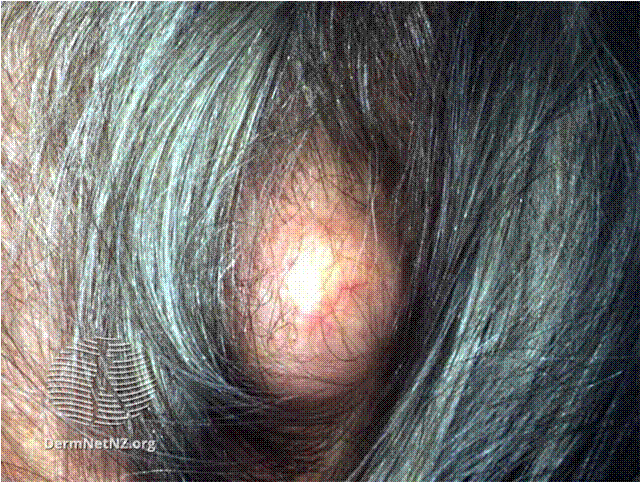
Epidermoid cyst
- Smooth mobile flesh coloured nodule within and fixed to overlying skin
- Presence of punctum helps confirm diagnosis
Spider haemangioma
- Compressible central feeding blood vessel of variable size
- May be associated with high levels of oestrogen e.g pregnancy, liver cirrhosis
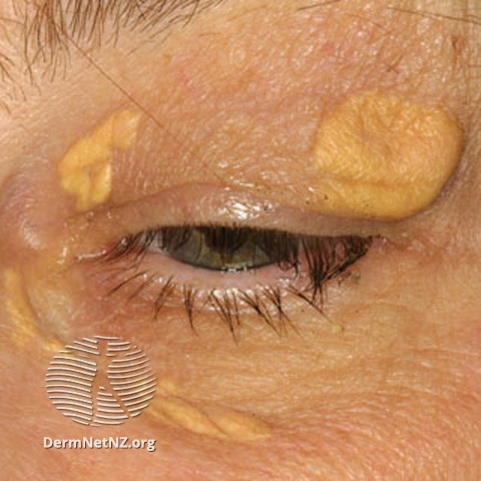
Xanthelasma
- Yellowish plaques nodules above and below the eyes
Giant comedones
- Like a small cyst with punctum
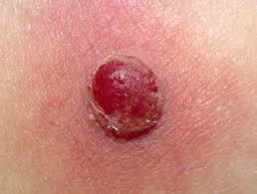
Pyogenic granuloma
- Rapidly growing vascular lesion often trauma site
R.C 18-05-24
Dermatology Referral Criteria
Referral of patients with benign tumours may be appropriate under the following circumstances:
- Diagnostic doubt or concerns over possible malignancy
- If there is no diagnostic doubt and the lesion is causing significant functional disability or recurrent trauma/infection, then please refer to your locality minor surgery service (see Refhelp page on Minor Surgery). Benign lesions in cosmetically sensitive sites where aesthetic outcome is very important to the patient (e.g. face) should be referred to the Plastic Surgeons if removal is justified.
- Benign lesions which are disfiguring or are cosmetically sensitive should be referred to plastics through the EARP (see AestheticSurgery.aspx).
- Please use the Consultant Connect app to take photos of the lesion(s) and then attach these to your Sci Gateway referral.
- Attaching photos to referrals – RefHelp
Kindly inform patients prior to referral that if a skin lesion is diagnosed as benign, it is highly unlikely to be removed in secondary care for cosmetic reasons alone
Please do not refer lesions that are known to be benign to the dermatology department for cryotherapy.
Lipoma
- Symptomatic lesions may be removed in primary care, but treatment in usually not indicated and risk of infection scarring and bleeding with minor surgery should be stressed.
- Lesions >5cm increasing in size warrant onward referral to relevant specialty as higher risk of liposarcoma.
Epidermal (sebaceous) cyst
- Treatment not usually indicated. Symptomatic cysts may be removed in primary care.
Spider haemangioma
- No treatment as they may resolve spontaneously, especially in children.
Xanthelasma
- May be a sign of underlying hyperlipidaemia – consider checking fasting lipids.
- Reassure patient, no treatment required.
Giant comedones
- Reassure patient no treatment required.
Pyogenic granuloma
- Due to frequent bleeding, excision or curettage/cautery required (specimen to pathology)
For Patients
Relevant patient information leaflets can be found at:
http://www.bad.org.uk/for-the-public/patient-information-leaflets
For Health Professionals
Link to PCDS Lipoma clinical guidance
Link to PCDS Epidermoid Cyst clinical guidance
Link to PCDS Haemangioma and other vascular tumour malformations clinical guidance

